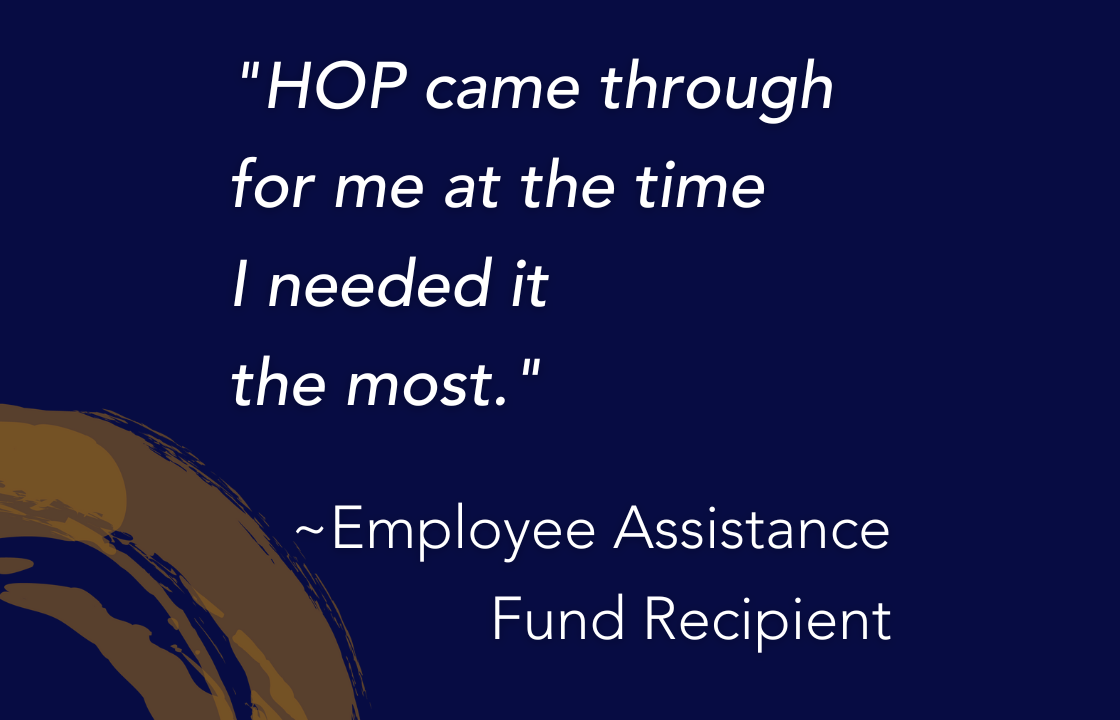In Hospice of the Piedmont’s new advertising campaign, we ask, if you had six months to live, what would you do?
The campaign’s goal is to help people understand that hospice does more than provide end-of-life care; it helps patients make the most of the time they have. As part of the campaign, we’re highlighting real-life hospice patient stories demonstrating how the time spent in hospice can help patients improve their quality of life.
Recently, in one of our weekly meetings, Jessica Davis, an RN Case Manager, updated the hospice care team about a hospice patient named Betty* who was planning a trip to New York City. Jessica helped Betty, her daughter Irene, and Betty’s home health aides prepare for the journey.
We recently chatted with Betty’s daughter, Irene, to get the full report on Betty’s adventure in the Big Apple.
What Makes a Hospice Journey Unique?
Betty grew up on Long Island and moved to Virginia with her husband when they retired to be closer to her daughter, Irene. Living in Virginia allowed Betty and her husband to watch their grandchildren grow up. “When my kids were little, and my parents were healthier, they could attend swim meets and piano recitals. It was wonderful,” says Irene.
Today, Betty still lives near Irene in Charlottesville, while her son Charles lives in New York City. Due to Charles’ demanding work schedule, he struggles to find time to get down to Virginia. So, he invited his mother to New York for a few weeks.
Traveling always comes with challenges, but despite what many people assume, hospice travel is not necessarily off the table. Betty has multiple sclerosis and is in the end stages of that disease. Irene explains, “Her breathing is poor, and she needs oxygen. She can’t move her limbs, so she uses a wheelchair. She gets fed. She gets bathed. She is extraordinarily limited. But her mind is there.”
Betty’s vision and hearing are diminished, so communication requires some adjustments and some patience. Irene says, “If you know her well and you stand right in front of her and talk loudly so she can hear you, you can have a real conversation with her. So, the people who know her best and love her, we still capture her essence.”
Betty was fortunate to make the trip with two home health aides who know her well and made sure she had a fantastic time.
Family Visits and An Iconic Landmark
Betty held court at the hotel, welcoming several small groups of family. She also connected with extended family. “She was able to see people she hadn’t seen in years,” says Irene. “They came to see her in the hotel because that was easiest for her.” Betty’s son, Charles, also took her out to dinner at some of New York’s swankiest restaurants.
During her trip to New York, Betty, and her crew, were able to enjoy many tourist activities, including visiting museums like the Guggenheim and Madame Tussauds Wax Museum.
One of the highlights of the trip was visiting the Empire State Building, which played a pivotal role in one of Betty’s favorite movies, An Affair to Remember. While there, she saw an exhibit featuring clips from the iconic 1957 film. “Not only was she in a building from her favorite, old-fashioned romance movie, but she was actually watching a scene taking place at the Empire State Building while she was in the Empire State Building. It was very meta,” laughs Irene.
Speaking of romance, Irene’s oldest son (Betty’s grandson) is getting married in October. Betty took advantage of the trip for a little shopping spree. She bought a special dress to wear to her grandson’s wedding. “That really gives her something to look forward to and plan for,” says Irene. “She can look at that dress and say, ‘I’m going to try to live till October’ or hopefully even longer. It’s been a great change of pace for her.”
A Hospice Journey Improves Quality of Life
Indeed, the whole trip seemed to spark a transition for Betty.
“My father died almost a year ago,” explains Irene. “Prior to the trip, things had been really sad and dreary. Mom didn’t want to leave the house. She was very anxious. Whenever we went out, she would ask, ‘When are we coming back? Where are we going? Why are we here? When do we leave?’
“And she’s not like that as much anymore. I think she’s realized: Oh, it’s kind of fun to do excursions. This trip was a wonderful way for her to realize that she didn’t just have to sit in her house. And I think it sparked her interest in doing more things locally.”
Advice for Hospice Travel
Given the trip’s success, we asked Irene for her advice on helping plan a hospice journey.
“Like many older people, my mom is very much a creature of habit,” says Irene. That meant sticking to Betty’s scheduled nap every day at three o’clock. “She did that so she could have the energy to go out when my brother took her to dinner.”
She says it’s also essential to plan things out in advance, ensure buildings are handicap-accessible, and locate the nearest 24-hour pharmacy for medication refills.
Lessons Learned About the Hospice Journey
As a physician, Irene felt she still had much to learn about the hospice experience. “I think many people – myself included in the beginning – have a stigma about hospice. You know, ‘hospice equals death.’ But hospice is about much more. It’s about fulfilling and optimizing the life that you have. The hospice care team understands what they’re going through. They understand how to be helpful and be a sounding board for anxiety.”
“Even as a physician, I’ve learned that unless you specialize in end-of-life care, you don’t really get to see all that goes into it,” she continues. “For example, we treat people in the hospital, and then they go home. I didn’t really understand what happens after people go home in a debilitated state. But, having gone through the hospice experience with my father and mother, I realized how complicated it is and how much patience and creative problem-solving you need to give them their dignity and some joy.”
When Is It Time for Hospice?
If you have a friend or family member who might benefit from hospice care, encourage them to contact us. As one of our Medical Directors, Dr. Michael Dobson, recently explained, “It would be nice if everyone considered it much earlier. You don’t need to sign up; just do yourself a favor and get the information.”
As Irene says, “I’ve learned about the depth and breadth that hospice offers. The whole hospice team is wonderful. There’s the social work staff, the nurses, and everything else. I feel like I can lean on them. And I have. And I’m sure I’ll continue to.”
—–
* At the request of the family and to protect patient privacy, the names of the people in this story have been changed.



